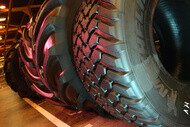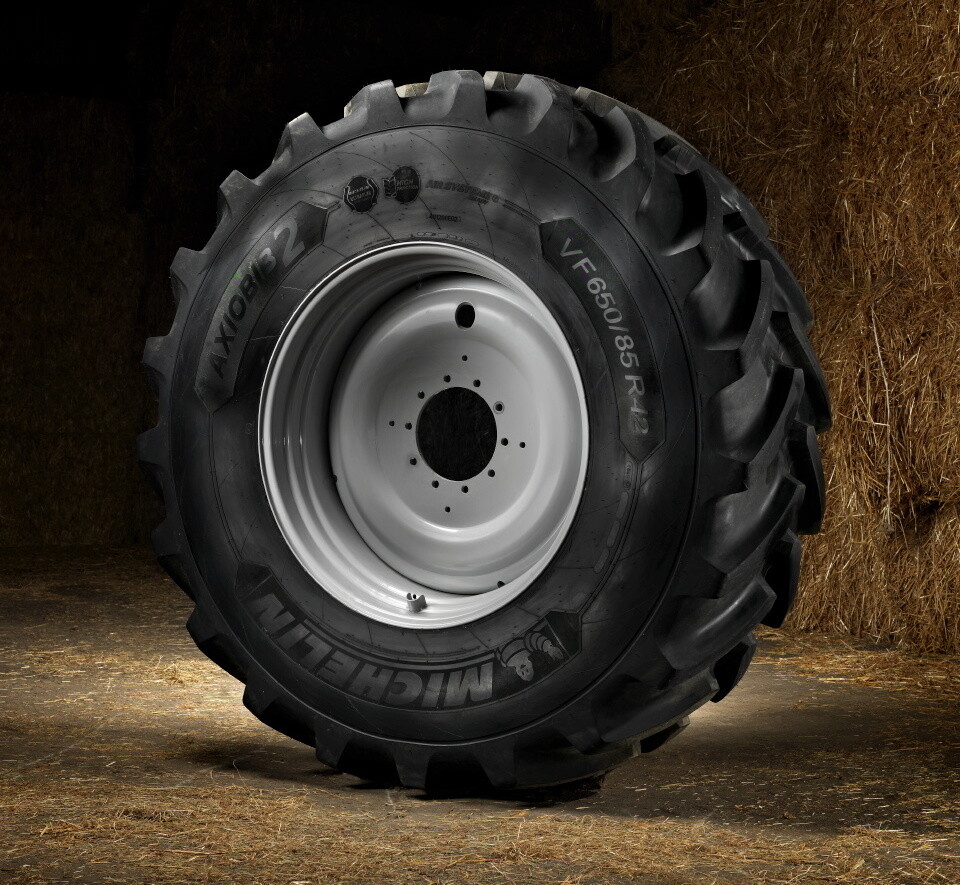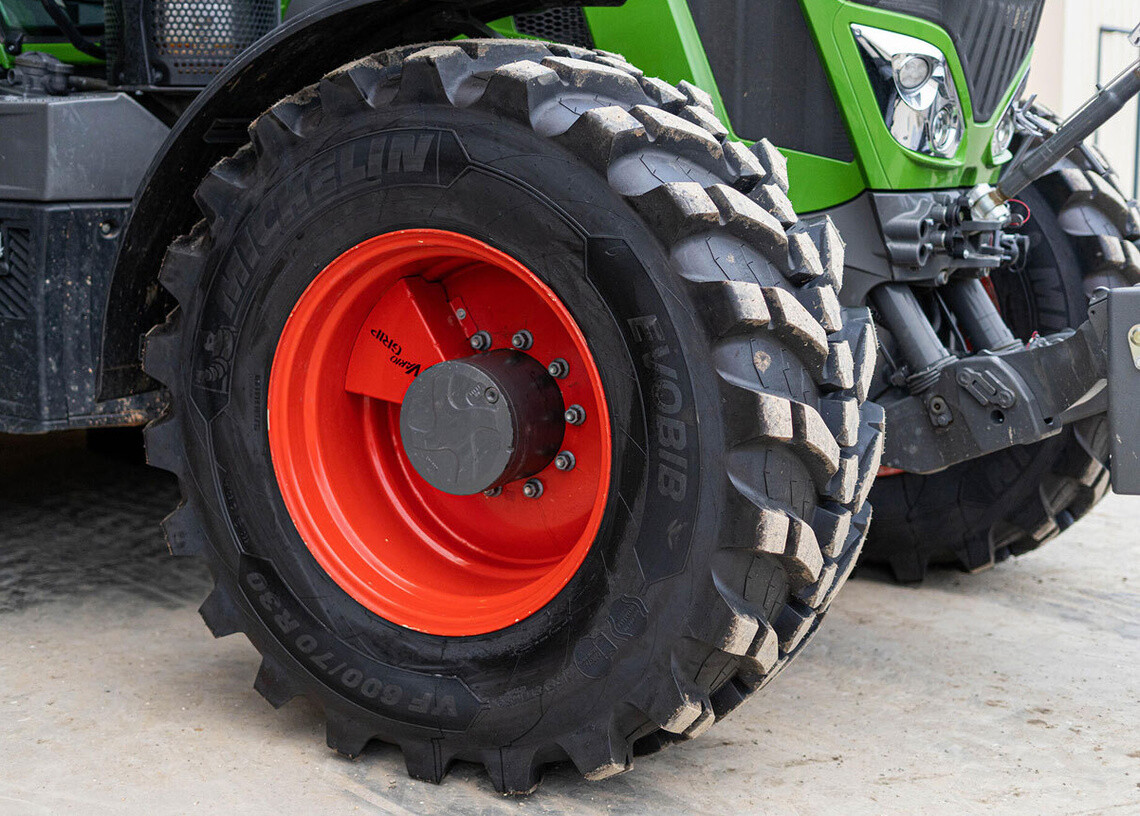
Tractor tyre replacement: when to change
Tyre replacement: when to change tractor tyres?
When carried out wisely, selecting the right tyre can maximise your tractor's performance in every use, improving your productivity. But when should you change tyres? How can you optimise their performance? Are there any pitfalls?
To find out the answers read below.
Tyre replacement based on tractor use
As you probably know, one of the most common reasons for tyre replacement on your tractor is to meet the needs of your activity. For example, wider tyres are often more appropriate for top work or when the ground is soft. Conversely, narrow tyres make it easier to pass through standing crops in your field.
And as this can happen several times a year, instead of carrying out a tyre replacement, it's simpler and easier to replace the wheels as a whole (tyre + rim). This, of course, implies having a second set of wheels available.
How to choose the second set of wheels
If you want to easily manage a tyre replacement with two sets of wheels of different widths, it is important to ensure that the diameters and rolling circumference of the tyres is compatible with the tractor's mechanical ratio.
As the front wheels have a smaller diameter than the rear wheels, they do not rotate at the same speed. The mechanical ratio is the ratio between the speed of rotation of the front wheels and that of the rear wheels. For example, an mechanical ratio of 1.5 means that the front wheels turn 1.5 times faster than the rear wheels.
The mechanical ratio will be advised by your vehicle manufacturer. With this information your tyre dealer will be able to advise you of the correct tyre options while respecting the mechanical ratio of the vehicle. Whether you want to widen the tyre for greater load capacity or to be able to lower the pressure to protect the ground.

MICHELIN Axiobib2 wheel
pneu MICHELIN AXIOBIB2
How to store unused wheels
When a set of wheels is not in use, store it in a clean, dry place away from direct sunlight. This will prevent premature ageing of the rubber and keep your tyres performing for longer.
Can different tyres be fitted to the same tractor?
As we've just explained, it's possible to fit different tyres to suit the needs of your field. But not everything is possible, as we'll explain below.
Can I fit different tyres at the front and rear?
It is technically possible, on a tractor, to fit two different ranges of tyres at the front and rear although this should only be done in response to specific needs, ensuring that front wheel lead is taken into account. Remember, however, that the ranges are designed for specific tractor powers and uses.
Can I fit different tyres on the same axle?
It is strongly recommended that you have the same size, the same load and speed index, the same brand of tyre and the same range on the same axle. It is also preferable to have the same level of wear on the two tyres of the same axle to avoid premature wear. This means that tyre replacement on the same axle should be done in pairs.

Identical tyre on a same axle
Tyre replacement due to wear
Wear is indeed an important signal for tyre replacement. And there are no wear indicators on tractor tyres as there are on passenger car tyres. Nevertheless, tyre wear is something to keep an eye on, as worn out tyres can compromise traction, increase wheel slip and therefore increase fuel consumption, which of course has an impact on your costs.
When you notice that your tractor is having more difficulty in muddy and slippery conditions, this could mean that the tyres are worn out. Don't delay in consulting your tyre dealer about tyre replacement.
The right pressure to optimise performance
How do I know the right pressure for my tyres?
Correct tyre pressure is essential to maximise traction, avoid premature wear and extend the life of your tyres. To make sure you always have the right pressure, we recommend checking it regularly with a reliable gauge and adjusting it if necessary according to load and speed.
If you don't know the recommended pressure for your tyres according to load and speed, you can consult our online tool "MICHELIN AGROPRESSURE" and let yourself be guided. In just a few seconds, our tool will help you find the right tyre pressure for any configuration of tractor and equipment even if you don't know the axle load.
When to check your tractor tyre pressure?
Check tyre pressure when replacing wheels
Have you decided to replace your wheelset with narrower or wider wheels? This is a good time to check your tyre pressure. The set of wheels you had in storage may have lost air since they were last used. Remember that under-inflated tyres will under perform and consume more fuel. Having the correct tyre pressure will save you money.
Check tyre pressure when your load changes
To ensure the best possible performance from your tyres, their pressure needs to be adjusted according to the load and speed requirements of your application. If, for example, the tractor is carrying a plough on the road, this represents a heavy load that requires a higher tyre pressure. But once the plough has been put into work in the field, the load and speed are reduced, which means that your pressure has become too high.
If this is difficult to achieve, always set your tyre pressure based on the load and speed of the activity thats most demanding of your tyre and set the corresponding maximum pressure.
Tyre replacement: which tyres to choose?
Choosing the right type of tractor tyres is crucial to optimising your agricultural operations. Different terrains, soil conditions and tasks require specific tyre characteristics to ensure optimum traction, stability and longevity.
To help you make the right choice, browse our tyre selector:
STAY TUNED
TO THE LATEST NEWS FROM MICHELIN AGRICULTURE!
By providing your email address and clicking on "Send", you agree to receive news and information from Michelin.
You can unsubscribe at any time.
For information on how we process your personal data including on data security, data retention and lawful processing bases, please see our Privacy Policy.
Fields marked with an asterisk (*) are mandatory.
Without these details, we cannot process your request.
We are delighted to have you among us.
Other articles to find out more:
Need more advice? Discover our tyre choosing guide.




